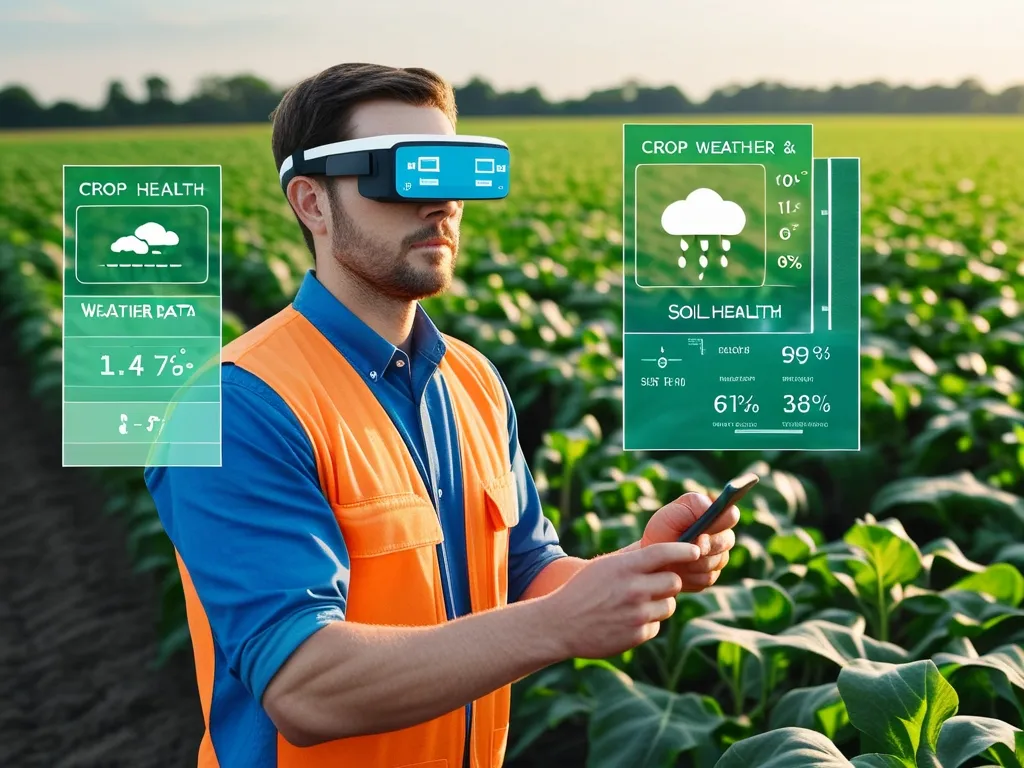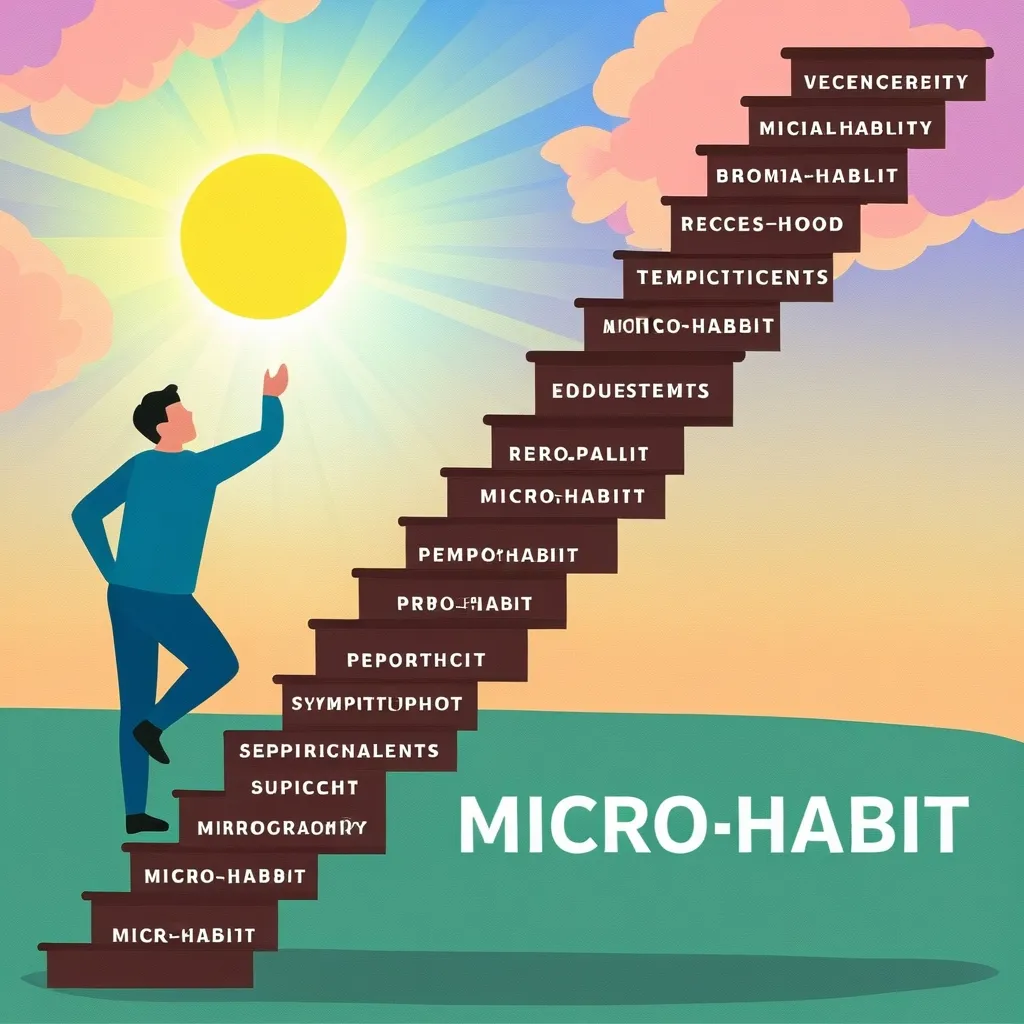In the ever-evolving landscape of agriculture, a revolutionary tool is transforming the way we farm: augmented reality (AR). Imagine stepping into a field or even your backyard, wearing AR glasses that overlay digital information onto the real world. This isn’t just about visualizing data; it’s about creating a symbiotic relationship between the physical and digital realms, enhancing every aspect of farming from planting to harvesting.
Enhancing Crop Management
With AR, farmers can now monitor their crops in real-time, receiving detailed projections of plant health, soil conditions, and weather forecasts. For instance, using AR glasses, a farmer can point their camera at a field and see simulated multi-level crop data, including nutrient requirements, pest detection, and disease alerts. This immediate access to structured data enables timely interventions, saving crops from disease and optimizing growing conditions.
Precision Farming Redefined
Precision farming, a practice that aims to optimize crop yields and reduce waste, is significantly enhanced by AR. Farmers can plan and execute growing and harvesting processes with greater accuracy. AR allows them to visualize their planting in detail, identify potential problems early, and address them before they escalate. This precision reduces losses and increases profitability, making farming more efficient and sustainable.
Innovative Training and Education
AR is not just a tool for experienced farmers; it’s also a game-changer for those new to the field. Virtual training sessions can recreate real-world farming scenarios, allowing learners to practice pre-planting field processing, harvesting, and even emergency situations like pest outbreaks or equipment failures. This interactive learning environment builds muscle memory and confidence, reducing the number of incidents and errors in the long run.
Remote Assistance and Troubleshooting
One of the most compelling aspects of AR in agriculture is its ability to provide real-time remote support. Farmers can use smart glasses or mobile devices to transmit video feeds to experts, who can then overlay digital notes and instructions to guide the farmer through repairs or troubleshooting. This minimizes downtime and ensures that problems are resolved quickly, even in remote or hard-to-reach areas.
Urban Farming and Space Optimization
AR isn’t limited to traditional farming settings; it also opens up new possibilities for urban farming. In cities where land is scarce, AR can help optimize space usage. For example, using AR apps, urban gardeners can visualize different crop layouts and growth simulations on their rooftops or backyards. This allows them to experiment with various planting strategies and see the potential harvests before actually planting, making urban farming more efficient and productive.
Livestock Management and Health Monitoring
AR is also transforming livestock management. Farmers can use AR to display information about the health and productivity of each animal, hold virtual veterinary consultations, and optimize feeding and housing conditions. This real-time monitoring ensures that any health issues are identified and addressed promptly, improving the overall health and productivity of the livestock.
Supply Chain and Logistics Optimization
The integration of AR into agricultural logistics is another area where significant gains are being made. AR can visualize product delivery and storage routes, optimize warehouse operations, and provide real-time tracking of inventory and equipment. This streamlines the entire supply chain, reducing inefficiencies and ensuring that products reach the market faster and fresher.
Personal Experiences and Practical Applications
I recall a visit to a local farm where the farmer was using an AR app to monitor his indoor plants. With a simple point of his tablet camera, he could see detailed data about the soil, lighting, humidity, and the condition of the plants. He could even adjust the LED light, ventilation, and irrigation systems directly through the app. This level of control and real-time feedback was astonishing, and it clearly demonstrated how AR can make farming more precise and efficient.
In another instance, I saw how AR was being used in a community garden to help novice gardeners identify their plants. An app called Candide Labels allowed users to take pictures of their plants and receive instant identification along with additional information on how to care for them. This not only made gardening more accessible but also reduced the need for plastic plant labels, contributing to a more sustainable gardening practice.
Overcoming Barriers to Adoption
Despite the numerous benefits, there are still barriers to the widespread adoption of AR in agriculture. Many farmers are hesitant due to a lack of understanding about the technology and its potential benefits. There is also a fear of the initial investment required and the complexity of integrating AR into existing farming practices. However, as more success stories emerge and the technology becomes more user-friendly, these barriers are slowly being overcome.
The Future of Farming
As we look to the future, it’s clear that AR will play a pivotal role in shaping the agricultural industry. By bridging the gap between the physical and digital worlds, AR is enabling farmers to make more informed decisions, optimize resources, and increase productivity. Whether it’s through virtual farm tours, precision farming, or remote assistance, AR is transforming farming into a more sustainable, efficient, and innovative practice.
In this new era of farming, the line between the digital and the physical is blurring. Farmers are no longer just tending to their fields; they are navigating a complex interplay of data, technology, and nature. As we continue to explore the possibilities of AR in agriculture, one thing is certain: the future of farming is not just about growing crops; it’s about cultivating a smarter, more sustainable way of living.






